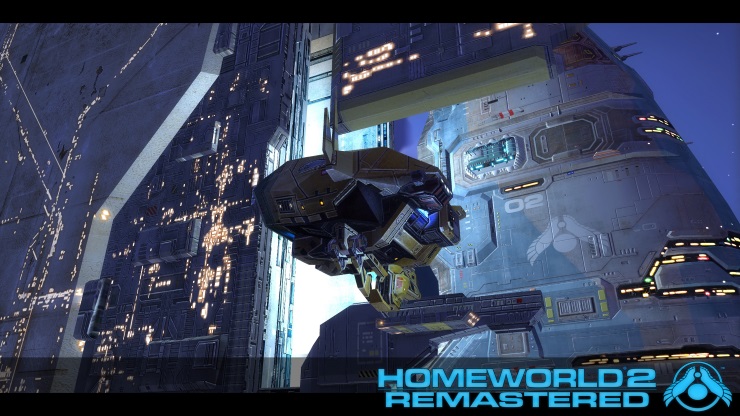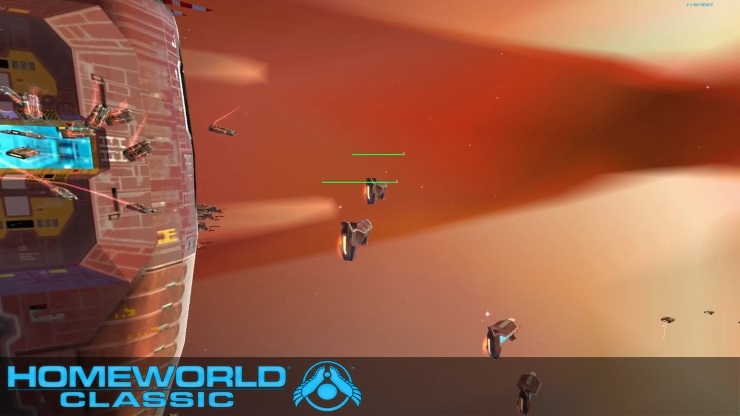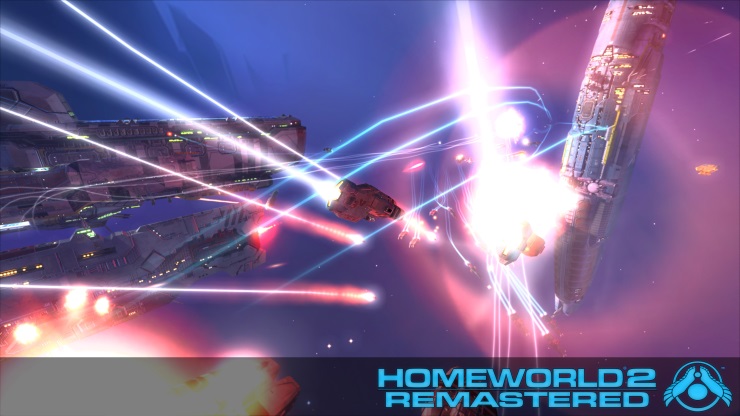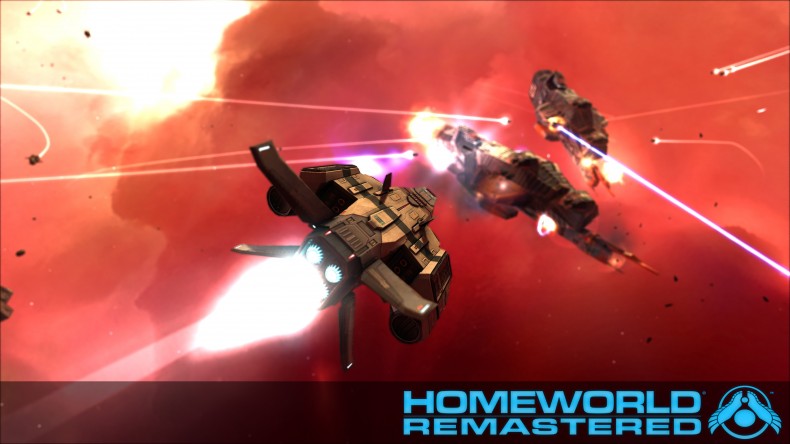Nostalgia has that really inconvenient habit of making you think that old games will still match up to a modern standard. Sometimes they are – Theme Hospital is just as enjoyable as it was in 1997 – but mostly they leave you wondering how you ever enjoyed them in the first place. It’s a tight-line to tow for developers remastering games, especially those that are over a decade old. On the one hand they could fix the original’s flaws, but on the other, they do want to stick true to what it was.
So when I spoke to Gearbox’s Brian Martel and Chris Faylor about the Homeworld Remastered Collection, I had a mixture of relief and dread when they admitted that they had tinkered a little bit beyond overhauling the graphics and sound of the legendary space RTS – but not much. Would the original engine still hold up sixteen years later? Would it be able to stand up against more recent RTS games? Most importantly, would it be as I remember?
It gives me great pleasure then to answer yes on all accounts, albeit with a few caveats.
Early on in the upgrading process, Gearbox changed the title from Homeworld HD to Homeworld Remastered, as they felt it didn’t convey the scope what they were doing to the games. The collection includes Homeworld 1 & 2, both of which have had their graphics upped with high definition textures and new particle effects, as well as the original, uncompressed audio files and remade cinematics. The effect is incredible, this is Homeworld as you’ll fondly remember it – although with the included classic editions of both games you can go back and see just how big an improvement has been made.

Every texture looks stunning. Ships are crammed with detail, from blinking pilot lights, through to glittering window ports and little towers and crenulations. Each leaves a fading wake trail, and coupled with the explosions and laserblasts of a battle, this means that each fight is a mass of glorious colour. Ships soon become pockmarked where they are stuck, leaving glowing craters in their sides and trailing smoke. Simply put it looks fantastic.
The atmosphere this creates is incredible, too. Fighters bob and weave in formation, while larger ships glide sedately into position and fire at each other across the battlefield. Draped over this is the audio: the frantic battle chatter of pilots struggling for their lives, the serene voice of your Mothership (re-recorded for the remaster) giving out orders, and the excellent score. It all combines to give a very defined sense of style.
Gearbox can be praised for the graphics, then, but the original Relic engine still holds up as well. Both games use the Homeworld 2 engine, itself a slightly updated version of the original engine. Ship control is easy, even though battles take place on a 3D plane. Right clicking brings up a wheel showing the distance to where you want to go, whilst dragging with the left button changes the height. In practice it quickly becomes second nature, and units will automatically change height to match other ships or the enemy if you target them instead.

Simply put, the core idea is to construct an army and destroy your opponent. You start each battle with your Mothership and some Resource Collectors. The former can build new ships, while the latter gather resources (didn’t see that coming did you?) from asteroids. Building ships involves researching the design, building the correct module on your Mothership or another construction capable ship, and then hitting build. It’s a simple process; all handled by a series of menus on the right hand side of the screen that show what ship you are using to construct what.
The ships themselves all serve a distinct purpose. Fighters will destroy bombers, but be little more than an annoyance to anything else, while Battlecruisers can make short work of Frigates, but won’t be able to hold off a swarm of Bombers. Exploring the full extent of the tech-tree is rewarded, and while it does mean if you bring the wrong units to a fight there’s little room for flexibility, in practise you’ll never set out with an un-balanced fleet.
Destroying an enemy fleet involves a surprising amount of tactics, and it can get a little fiddly. When everything is a swirling criss-cross of bright colours, trying to find the fighters you want to use to defend your capital ships can be a pain. Luckily this is compensated to some degree by the intelligent AI. If left to their own devices, your units will attack suitable opponents, leaving you free to control your larger ships and focus their fire.

There are a few niggles to iron out before release, though. Missions are sometimes a little slowly paced, as are early skirmishes. While staying true to the original, it’s still a slight annoyance. A new multiplayer/skirmish mode which starts you off with a small fleet has been introduced however, so that’s something.
A larger issue is the slight imbalance between the sides in skirmish mode, which will have a knock on effect on the multiplayer. The problem arises because all the factions from both games have been moved into one mode, sides which weren’t intended to battle each other. This will undoubtedly be improved by the time Homeworld Remastered launches, but even if it isn’t fixed, the multiplayer is coming with a “beta” label, with Gearbox planning on patching out issues beyond release.
So it’s looking good for this remaster of an RTS classic. If you loved either Homeworld game back in 1999 or 2003 you’ll enjoy this, and while if you hated it this probably won’t change your mind, I won’t be surprised if the series gains a new legion of fans.





